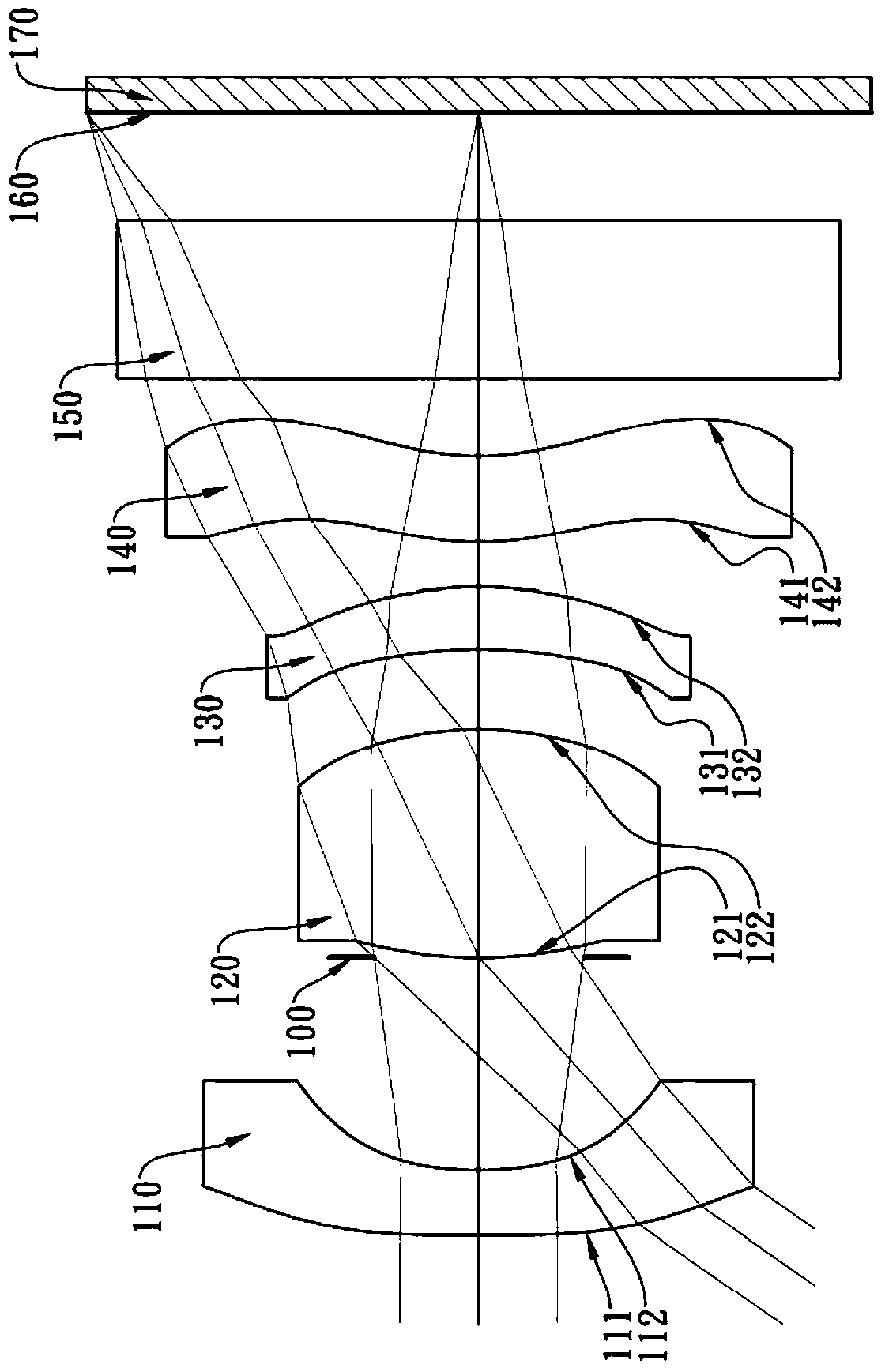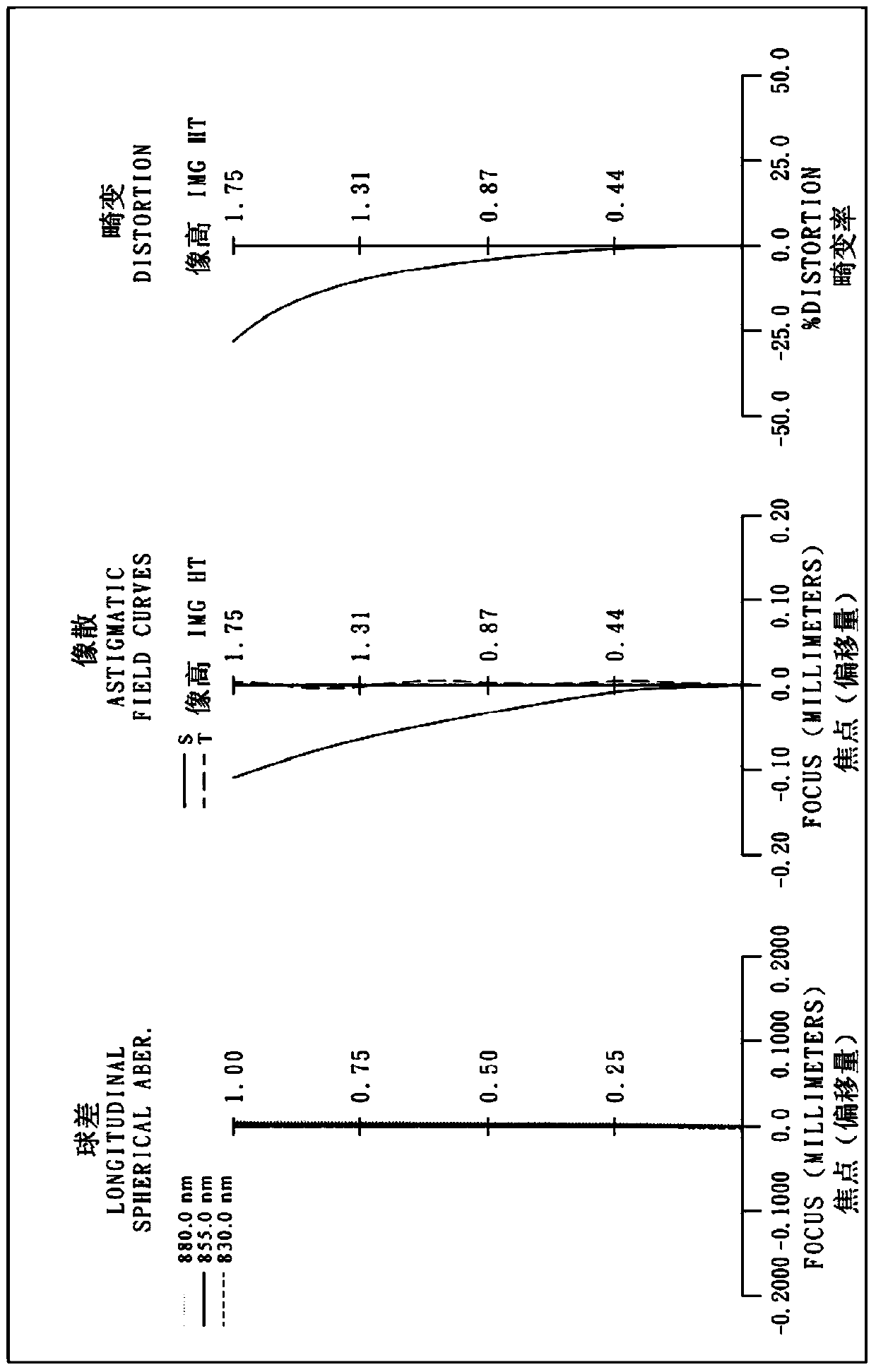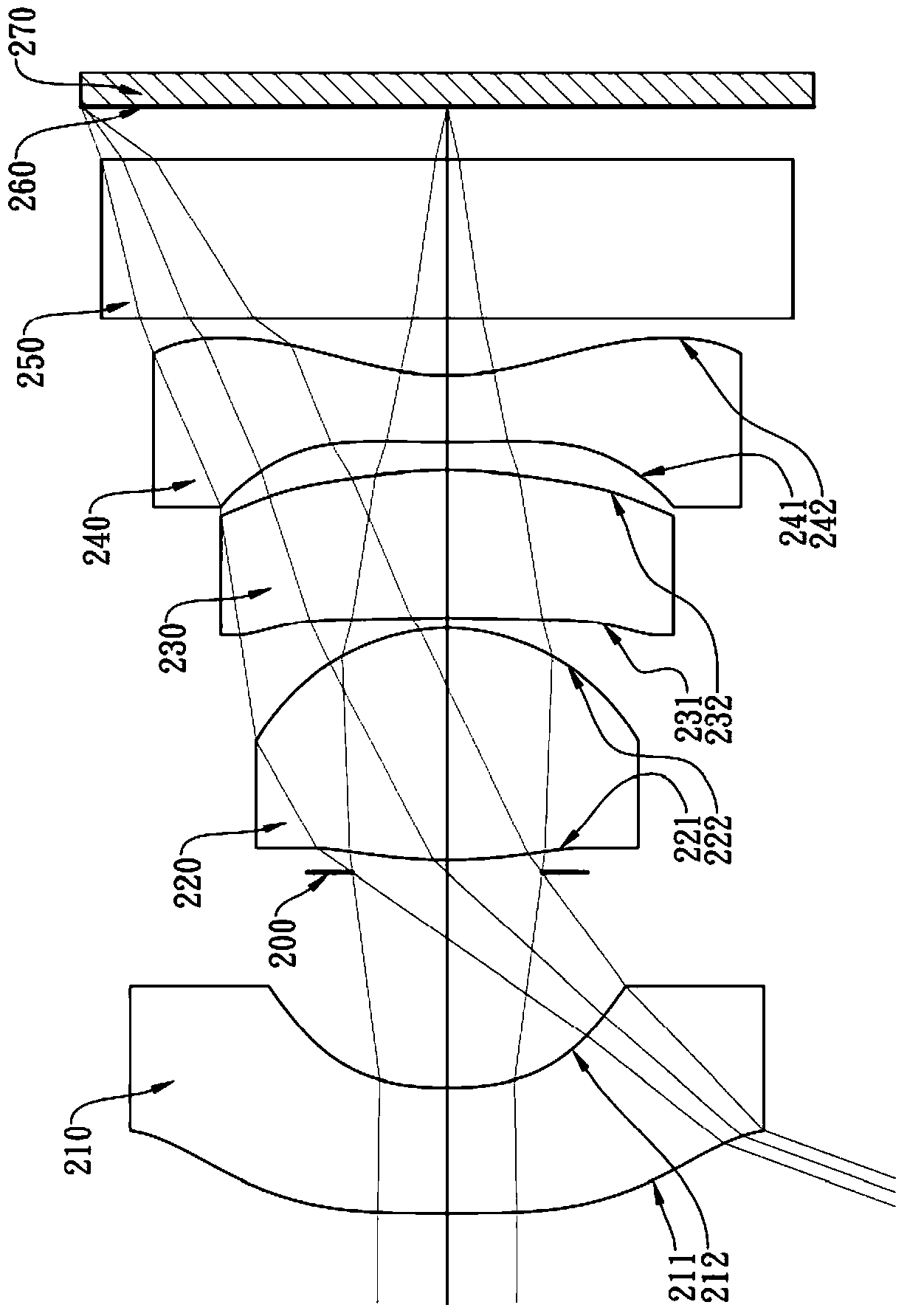Optical system mirror group, imaging device and electronic device
An optical system and mirror group technology, applied in optics, optical components, instruments, etc., can solve the problems of difficult product volume reduction, use restrictions, stray light intensity quality, etc. The effect of correcting off-axis aberrations
- Summary
- Abstract
- Description
- Claims
- Application Information
AI Technical Summary
Problems solved by technology
Method used
Image
Examples
no. 1 example
[0125] Please refer to the first embodiment of the present invention Figure 1A , for the aberration curve of the first embodiment, please refer to Figure 1B . The imaging device of the first embodiment includes an optical system lens group (not another number) and an electronic photosensitive element 170. The optical system lens group includes a first lens 110, an aperture 100, and a second lens in sequence from the object side to the image side. 120. The third lens 130 and the fourth lens 140, wherein:
[0126] The first lens 110 has a negative diopter and is made of plastic. The object side 111 is convex at the near optical axis, and the image side 112 is concave at the near optical axis. Both the object side 111 and the image side 112 are aspherical. ;
[0127] The second lens 120 has a positive diopter and is made of plastic. The object side 121 is convex at the near optical axis, and the image side 122 is convex at the near optical axis. Both the object side 121 and t...
no. 2 example
[0162] Please refer to the second embodiment of the present invention Figure 2A , for the aberration curve of the second embodiment, please refer to Figure 2B . The imaging device of the second embodiment includes an optical system lens group (not another number) and an electronic photosensitive element 270. The optical system lens group includes a first lens 210, an aperture 200, and a second lens in sequence from the object side to the image side. 220, the third lens 230 and the fourth lens 240, wherein:
[0163] The first lens 210 has a negative diopter and is made of plastic. The object side 211 is convex at the near optical axis, the image side 212 is concave at the near optical axis, and both the object side 211 and the image side 212 are aspherical. ;
[0164] The second lens 220 has a positive diopter and is made of plastic. The object side 221 is convex at the near optical axis, and the image side 222 is convex at the near optical axis. Both the object side 221 a...
no. 3 example
[0175] Please refer to the third embodiment of the present invention Figure 3A , for the aberration curve of the third embodiment, please refer to Figure 3B . The imaging device of the third embodiment includes an optical system mirror group (not another number) and an electronic photosensitive element 370. The optical system mirror group includes a first lens 310, an aperture 300, and a second lens in sequence from the object side to the image side. 320, the third lens 330 and the fourth lens 340, wherein:
[0176] The first lens 310 has a negative diopter and is made of plastic. The object side 311 is convex at the near optical axis, the image side 312 is concave at the near optical axis, and both the object side 311 and the image side 312 are aspherical. ;
[0177] The second lens 320 has a positive diopter and is made of plastic. The object side 321 is convex at the near optical axis, and the image side 322 is convex at the near optical axis. Both the object side 321 ...
PUM
 Login to View More
Login to View More Abstract
Description
Claims
Application Information
 Login to View More
Login to View More - R&D
- Intellectual Property
- Life Sciences
- Materials
- Tech Scout
- Unparalleled Data Quality
- Higher Quality Content
- 60% Fewer Hallucinations
Browse by: Latest US Patents, China's latest patents, Technical Efficacy Thesaurus, Application Domain, Technology Topic, Popular Technical Reports.
© 2025 PatSnap. All rights reserved.Legal|Privacy policy|Modern Slavery Act Transparency Statement|Sitemap|About US| Contact US: help@patsnap.com



